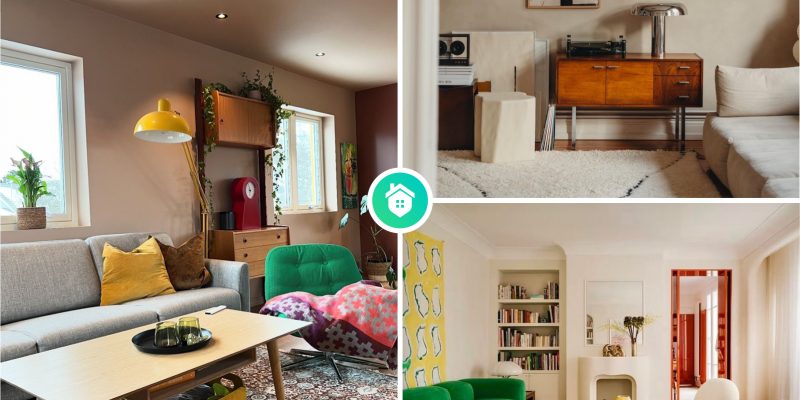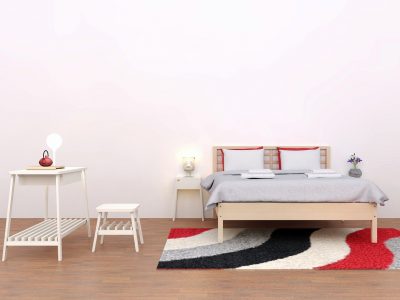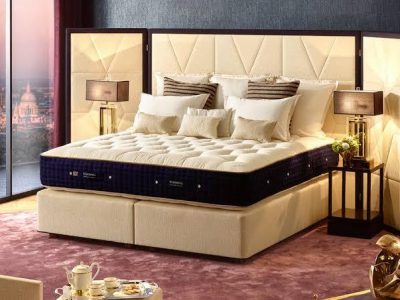When talking about furniture, there are many different styles and designs to choose from. Each style offers a unique aesthetic that can complement any home decor. One of them is the 1950s furniture style. 1950s furniture in interior design represents a shift towards sleek, modern aesthetics and innovative materials. It also reflects the post-war optimism and economic prosperity of the era, influencing design trends for decades to come.
The 1950s furniture styles were known for their sleek lines, bold colors, and geometric shapes. Popular materials used during this time included plastic, metal, and wood, reflecting the post-war era’s focus on modernity and innovation. Additionally, many pieces featured tapered legs and clean, minimalist designs that continue to influence contemporary furniture trends. So, here are some characteristics of 1950s furniture styles you should know.
Mid-Century Modern
The furniture style of the 1950s from the mid-century modern era is characterized by its clean lines, minimal ornamentation, and emphasis on practicality. This aesthetic frequently includes organic elements such as wood and leather, resulting in a timeless and refined appearance.
Clean lines and geometric shapes
Clean lines and geometric shapes are one characteristic of the 1950s furniture style reflecting the influence of modernism and the desire for simplicity and functionality in design during that era. This style often featured sleek, straight lines and minimal ornamentation, emphasizing a sense of order and efficiency in the design. It reflects the influence of mid-century modern design.
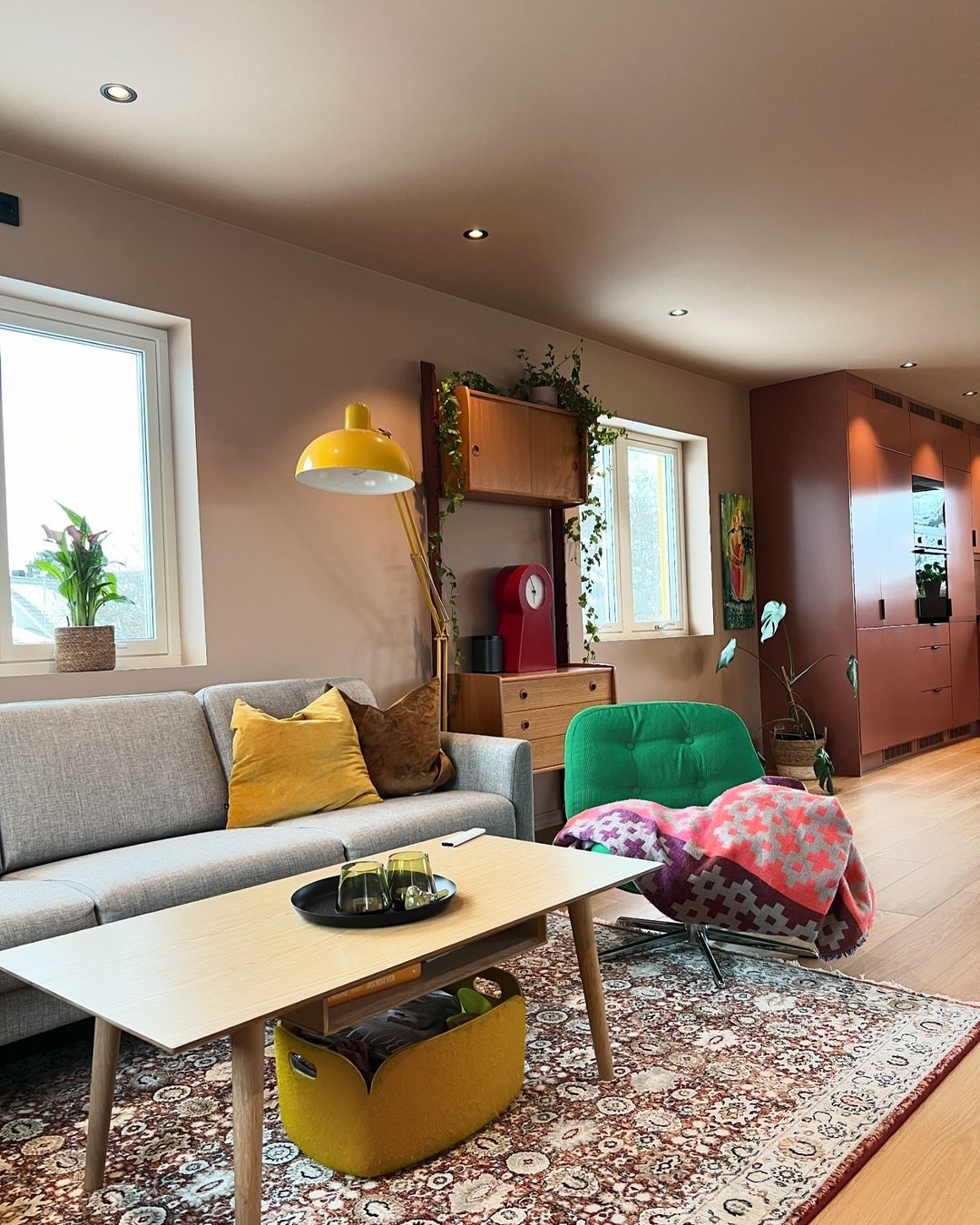
The rectangular 1950s mid-century coffee table with clean lines and tapered legs is a classic piece of furniture that adds a touch of retro charm to any living space. Its sleek design and timeless appeal make it a versatile choice for both modern and traditional decor styles. Clean line and geometric space from @huset_paa_olderskog
Use natural materials
In addition to clean lines and geometric shapes, characteristic of the 1950s furniture style is also using natural materials such as wood and leather. These materials were often left in their natural state or stained in dark, rich tones to enhance the overall sleek and sophisticated look of the furniture. The combination of clean lines and natural materials created a timeless aesthetic that continues to be popular today.
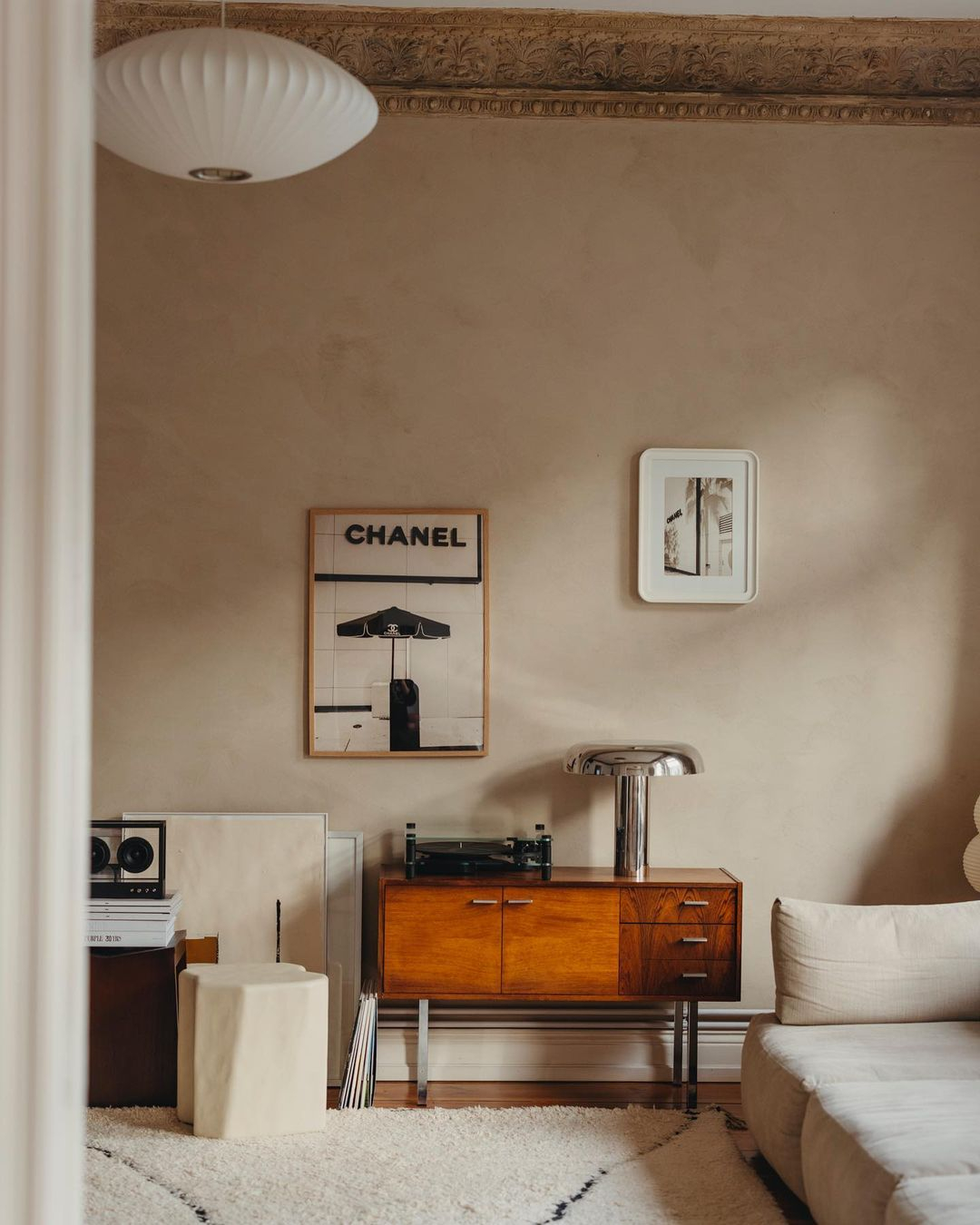
This 1950s mid-century sideboard is made from wood materials. It features sleek, clean lines and tapered legs, characteristic of the mid-century modern design aesthetic. The sideboard offers ample storage space with drawers and cabinets, making it both stylish and functional for any living room. 1950s mid-century sideboard from @oezlem.oezsoy
Featured tapered legs
Apart from clean lines and the use of natural materials, the 1950s mid-century modern furniture featured tapered legs. This design element added a sense of lightness and elegance to the furniture pieces. The tapered legs also contributed to the overall sleek and minimalist aesthetic of the mid-century modern design.
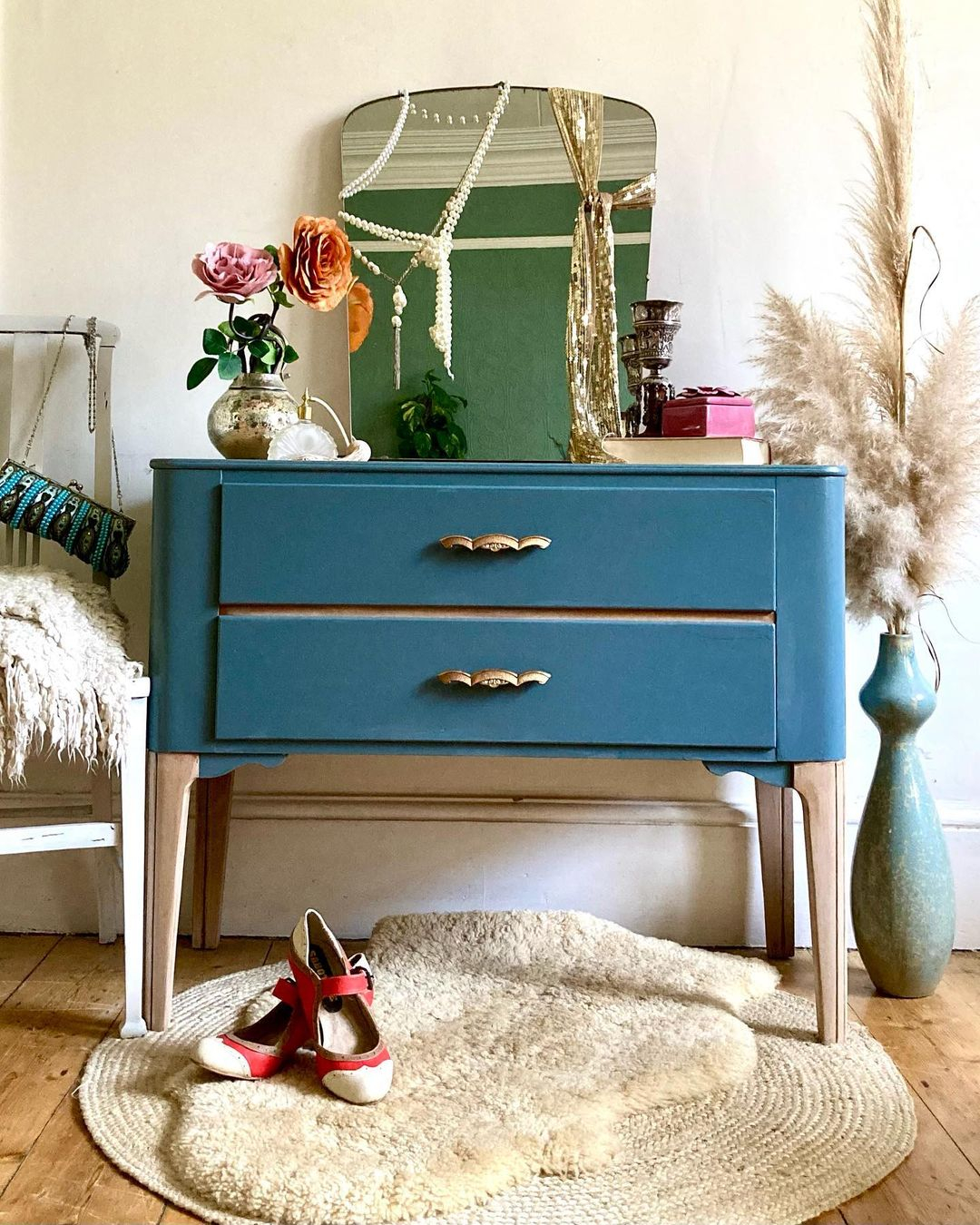
This 1950s mid-century dressing table with tapered legs features a sleek design with clean lines and a minimalist aesthetic. The spacious drawers provide ample storage for all your beauty essentials, making it both stylish and functional. 1950s mid-century dressing table from @olyaupcycle
Functionality and simplicity of designs
Another characteristic of the 1950s furniture style is functionality and simplicity in design. This era marked a shift towards more streamlined and practical pieces, with clean lines and minimal ornamentation. The focus was on creating furniture that was both aesthetically pleasing and highly functional for everyday use.
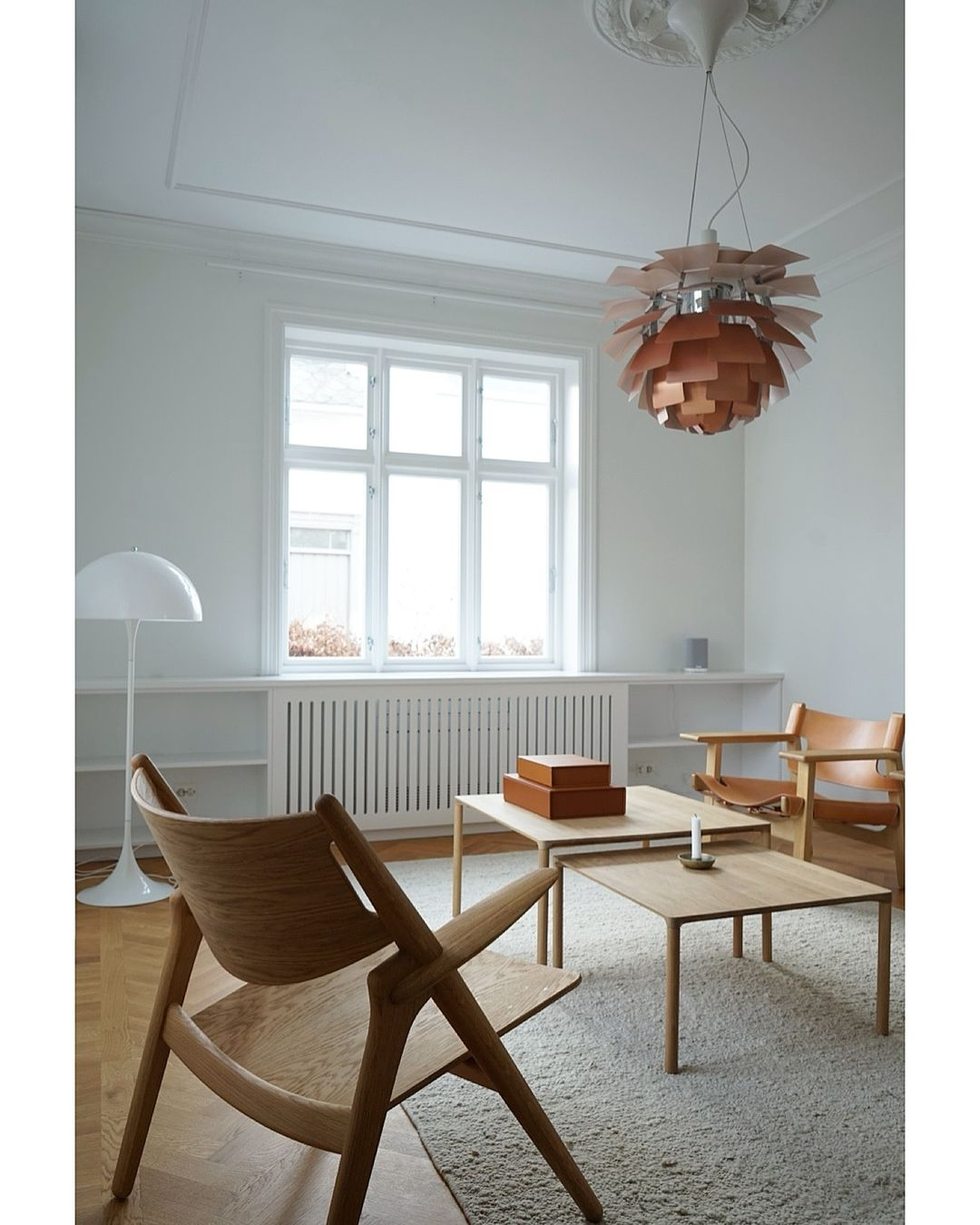
These chairs and coffee tables are sleek, with minimal ornamentation. This is a characteristic of the mid-century 1950s furniture style. The clean lines and geometric shapes of the pieces give off a modern and timeless feel. The use of wood materials also adds to the overall aesthetic of the design. Minimalist 1950s mid-century furniture from @mr.aardal
Atomic Age
The 1950s furniture style from the Atomic Age is characterized by clean lines, bold colors, and the use of futuristic materials. This retro design aesthetic reflects the optimism and innovation of the post-World War II era.
Space-age inspired designs
Another defining trait of 1950s furniture style is the incorporation of space-age-inspired designs, which are characterized by their streamlined and modern lines, as well as futuristic forms. These design elements were heavily influenced by the Space Race and the Atomic Age. This design style frequently utilized materials such as chrome, plastic, and Formica to achieve a contemporary and sleek appearance.
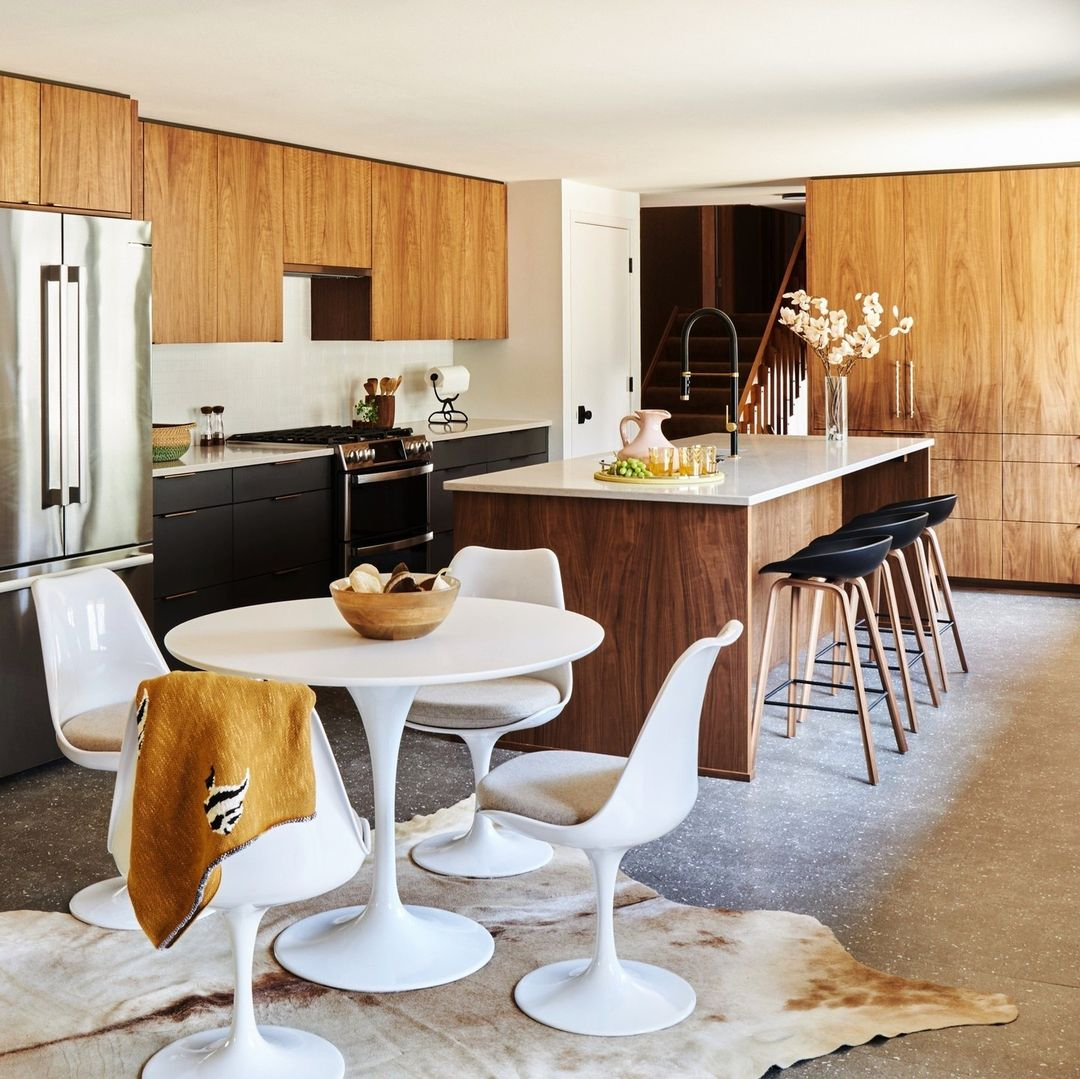
This tulip table and chairs are one example of space-inspired furniture designs that are characteristic of the 1950s furniture style. The futuristic look of this furniture adds a sleek and modern touch to any room, making it a perfect choice for those looking to add a unique flair to their home decor. Tulip table and chairs
Use bold colors and patterns
The utilization of vibrant colors and intricate patterns is a distinguishing feature of the furniture design prevalent in the 1950s. The upholstery frequently included strong design choices, which contributed a lively and bright element to the overall appearance. The use of vibrant colors such as turquoise, green, red, and yellow contributed to the establishment of a feeling of positivity and vitality inside the household during this period.
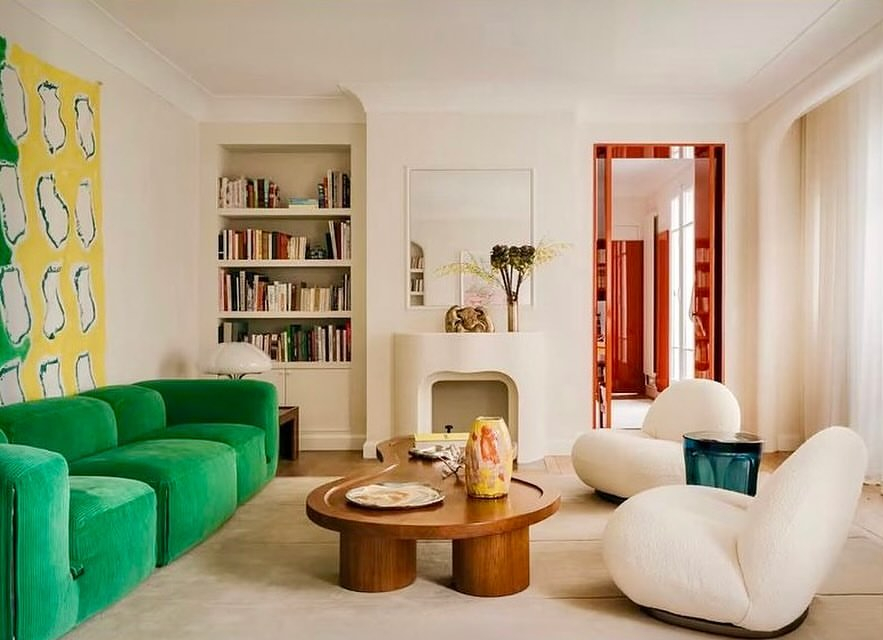
Placing a green sofa to bring a retro vibe to the room can add a pop of color and personality. Consider adding some vintage accents, like a mid-century modern coffee table, to enhance the retro aesthetic. Green sofa from @lebaneseindc
Incorporate chrome and plastic materials
Materials used in 1950s furniture incorporated futuristic materials such as plastic and chrome. The 1950s furniture style reflects the optimism and innovation of the post-war era. The popularity of this style continues to influence contemporary design, with many modern pieces drawing inspiration from the clean lines and simplicity of 1950s furniture.

Futuristic materials of 1950s furniture through chrome dining tables and chairs evoke a sleek and modern aesthetic, perfect for adding a touch of retro-futurism to any dining space. The use of chrome also provides durability and easy maintenance, making it a practical choice for everyday use. Chrome retro dining table and chairs from @70shousemanchester
Scandinavian Design
1950s Scandinavian furniture designs are known for their clean lines, minimalist aesthetic, and functionality. Influenced by the modernist movement, these designs often feature natural materials with an emphasis on craftsmanship, creating timeless pieces that are still highly sought after today.
Emphasis on craftsmanship
One more thing that you’ll notice about furniture from the 1950s is the focus on excellent materials and expert craftsmanship. During this time, there was a growth in the popularity of hand-carved patterns and elaborate inlays, as well as a return to more conventional methods of woodworking. For long-lasting and classic furniture, it was usual to utilize premium woods such as rosewood, walnut, and teak.
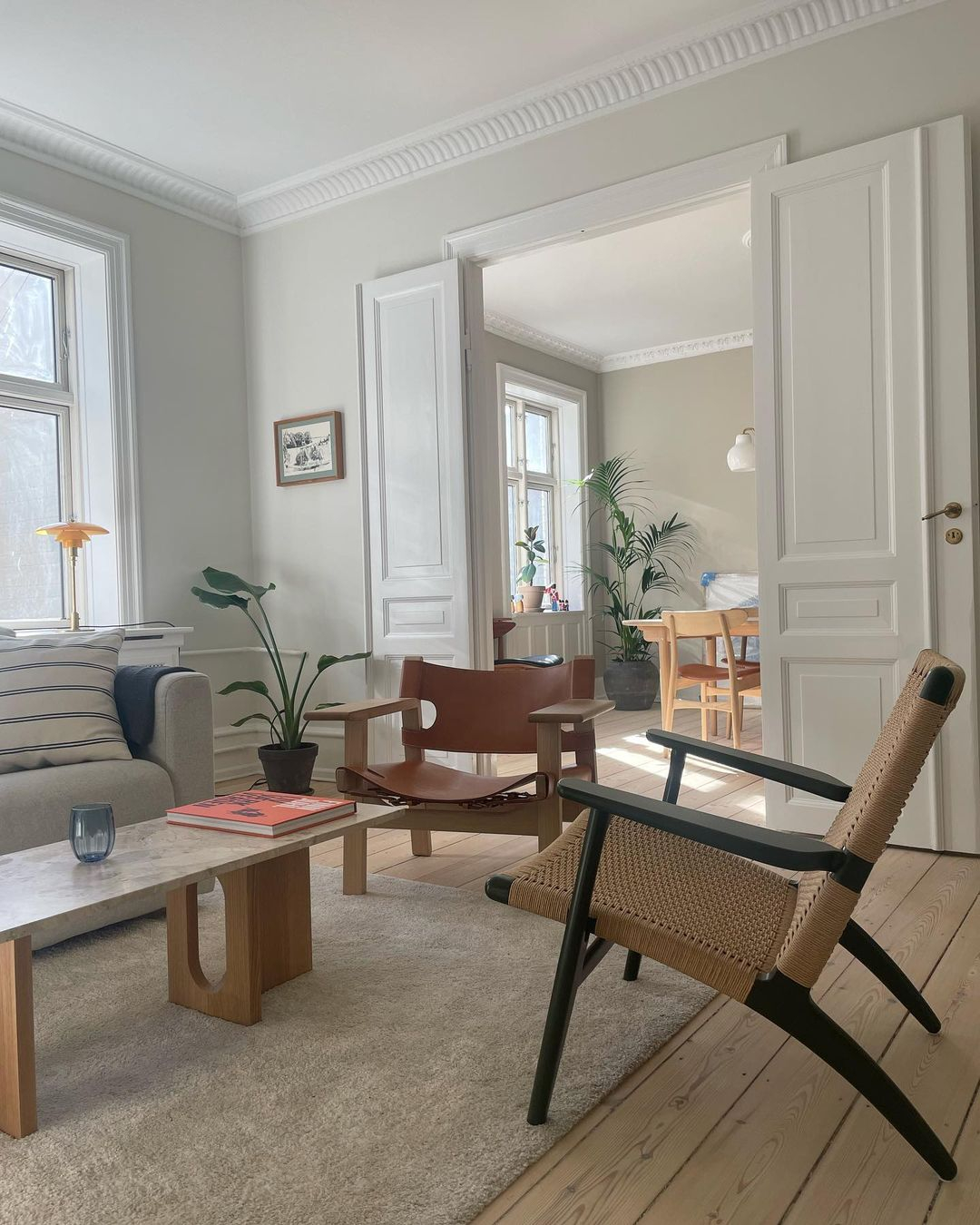
The 1950s Scandinavian furniture design with a woven chair and clean lines is known for its simplicity and functionality, often incorporating natural materials like wood and rattan. This style has become iconic for its timeless appeal and continues to influence modern design trends. Woven chair from @casa.copenhagen
Light and airy aesthetic
Additionally, a light and airy aesthetic with natural wood finishes is characteristic of 1950s furniture that reflects Scandinavian design. This style often incorporates clean lines, organic shapes, and a minimalist approach to furniture design. The use of lighter woods like teak and beech further emphasizes the simplicity and functionality of the pieces. Overall, the 1950s furniture from Scandinavia is known for its timeless appeal and ability to blend seamlessly with modern interiors. The combination of form and function in these pieces continues to inspire contemporary designers today.
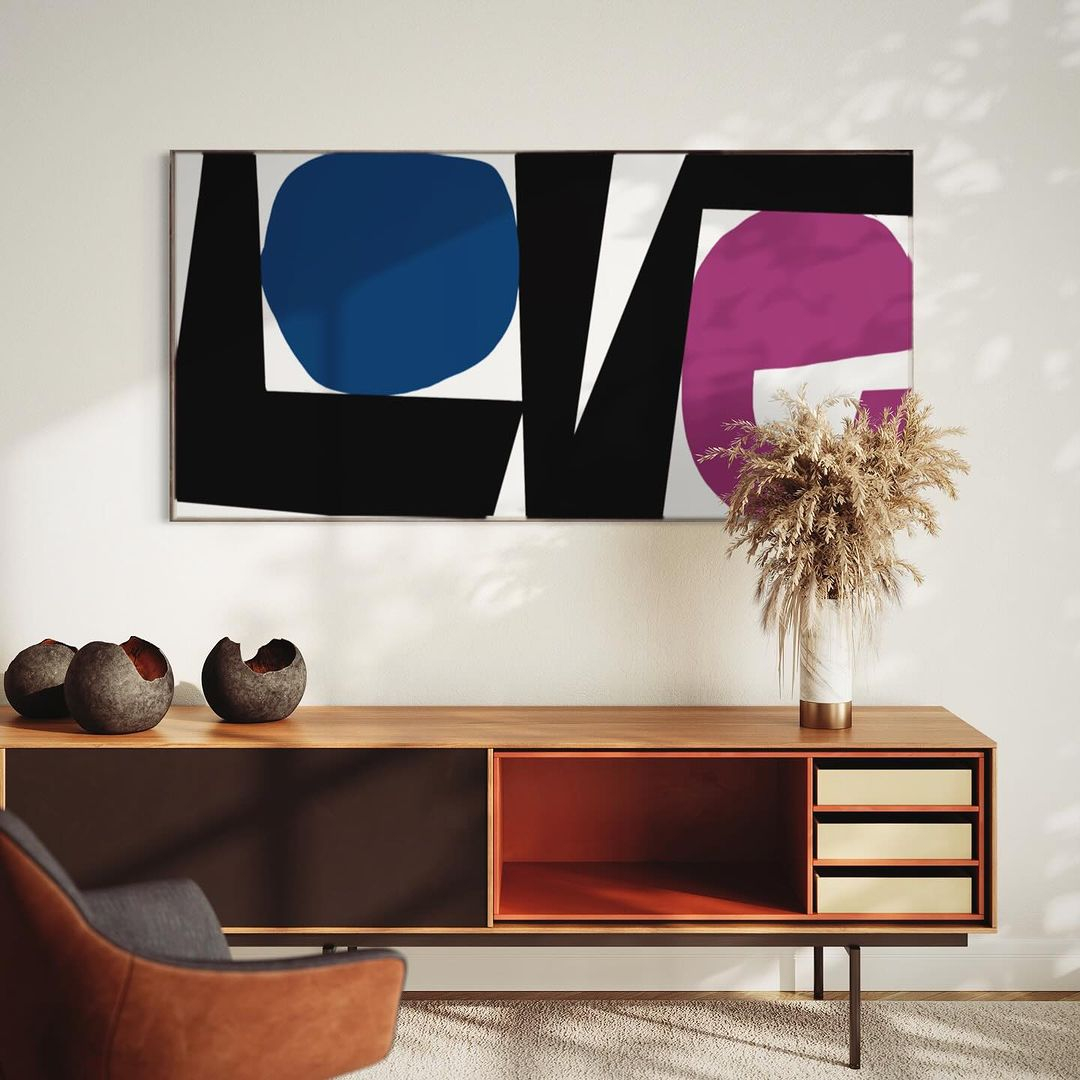
1950s Scandinavian sideboard with clean lines and a sleek teak finish, perfect for adding a touch of mid-century modern style to any space. This timeless piece of furniture offers ample storage space and a versatile design that complements both contemporary and traditional decor. Retro sideboard from @fran6
Overall, the 1950s furniture styles were characterized by sleek lines, bold colors, and a focus on functionality. These design elements continue to influence modern furniture trends, showcasing the lasting impact of this iconic era in interior design.


